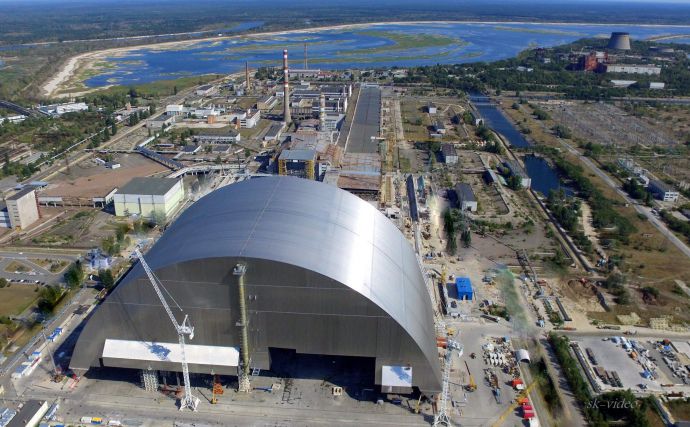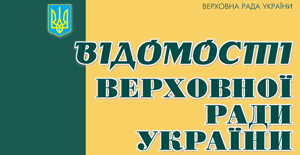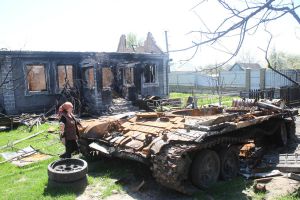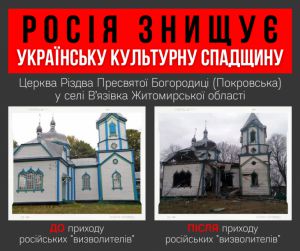Photo: the new Safe Confinement-2.
On the occasion of the 35th anniversary of the tragedy, the Security Service of Ukraine published this announcement based on the declassified KGB archive documents.
The announcement also reads, “In 1982, a considerable emission of radioactive substances happened at the first reactor of the plant. The KGB report, however, ended with the usual affirmation ‘measures have been taken to prevent panic and provocative hearsay’”. In 1984, a partial core meltdown occurred at reactors № 3 and № 4.
As far back as 1983, the administration of the nuke reported to Moscow that the plant lacked the major safety measures which made it one of the most dangerous power stations in the world.
On April 27, 1986, the day after the disaster, the leadership of the Soviet Union made a list of “disloyal” residents of the city of Pripyat and foreigners who had happened to visit the Chornobyl nuke. On July 8 of the same year, the Soviet authorities classified all the information about the reasons and consequences of the nuclear accident.
We’d like to remind our readers that on the night of April 26, 1986, the disaster occurred at reactor No. 4 of the Chornobyl nuclear power plant, caused by a catastrophic power increase resulting in core explosions and open-air fires. This caused large quantities of lethal radioactive materials and airborne isotopes to disperse in the atmosphere and surrounding land. The total emission of radiation that got into the air comprised 50 million curie which is 400 times more than after Hiroshima nuclear bombing. The radioactive cloud covered large areas having contaminated 200 thousand sq. km. of land, of which 70% were in Ukraine, Belarus and Russia.
According to different estimations, from 600 to 800 thousand people from all over the Soviet Union took part in clearing up the consequences of the nuclear disaster. Nearly four thousand people were killed by the explosion at the fourth reactor. More than 70 thousand liquidators who were engaged in clear-up operations became invalids. The radioactive emission that followed the explosion affected 1.9 people in Ukraine. The total number of the affected stood at 8.4 million people in Belarus, Russia, Ukraine and some European countries.
In 1986, a concrete cover, called “sarcophagus”, was hastily built over the damaged fourth reactor of the Chornobyl nuke. And in November 2016, the new Safe Confinement-2 in the form of a 110-meter-high steel arc was placed over the aging and hastily built sarcophagus. The casing meets the definition of a nuclear entombment device. In accordance with the state program of Ukraine designed to decommission the nuke, it is expected to become an ecologically-safe object by the year 2065.
The newspaper Voice of Ukraine








